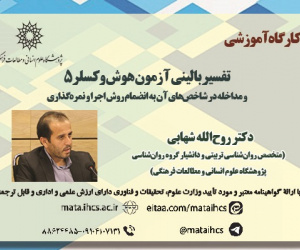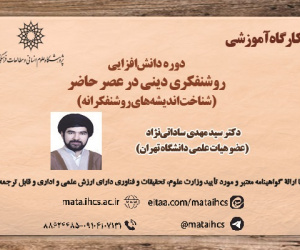نقش فعالیت های کلاس درس در پیش بینی هیجان های تحصیلی وارزش گذاری درونی در درس علوم دانش آموزان ابتدایی دوره دوم در عصر هوشمندسازی (مقاله علمی وزارت علوم)
درجه علمی: نشریه علمی (وزارت علوم)
آرشیو
چکیده
این تحقیق با هدف بررسی نقش فعالیت های کلاس درس در پیش بینی هیجان های تحصیلی و ارزش گذاری درونی در درس علوم تجربی دانش آموزان ابتدایی انجام شد. تحقیق از نوع توصیفی همبستگی بود. جامعه آماری تمامی دانش آموزان ابتدایی دوره دوم شهر نرماشیرمشغول به تحصیل در سال تحصیلی1401-1402 به تعداد 3625 نفر، که به روش نمونه گیری تصادفی ساده بر اساس فرمول کوکران 347 نفر از آنها به منظور شرکت در تحقیق انتخاب شدند. آزمودنی ها پرسشنامه راهبردهای انگیزشی پکران(2005)، هیجان های تحصیلی پینتریچ و دیگروت (1990) و ادارک از محیط کلاس جنتری گابل و ریزا (2002) را تکمیل کردند. داده ها با ضریب همبستگی پیرسون، رگرسیون چند متغیره و همبستگی کانونی تحلیل شدند. یافته ها نشان داد فعالیت های کلاس درس پیش بینی کننده منفی و معنی دار ارزش گذاری درونی است و فعالیت های کلاس درس پیش بینی کننده منفی و معنی دار ارزش گذاری درونی و فعالیت های کلاس درس پیش بینی کننده مثبت و معنی دار هیجان تحصیلی لذت و همچنین فعالیت های کلاس درس پیش بینی کننده منفی و معنی دار هیجان های تحصیلی غرور، اضطراب، شرم، خشم، ناامیدی و خستگی و فعالیت های کلاس درس، مؤلفه های چالش، انتخاب و لذت پیش بینی کننده منفی و معنی دار ارزش گذاری درونی هستند اما مؤلفه علاقه پیش بینی کننده معنی دار ارزش گذاری درونی دانش آموزان نمی باشد. در نتیجه فعالیت های کلاس درس از متغیرهای مهم در تکالیف تحصیلی هستند که تأکید بر آنها می توانند منجر به پیشرفت تحصیلی دانش آموزان در عصر هوشمندسازی باشد.The role of classroom activities in predicting academic emotions and internal evaluation in the science lesson of the second year elementary students in the era of intelligentization
This research was conducted to investigate the role of classroom activities in predicting academic emotions and internal evaluation in elementary school students' science courses. The research was descriptive-correlational. The statistical population was all of the elementary school students of the second term of Narmashir city studying in the academic year 2022-2023 (3625 people), of which 347 people were selected to participate in the research by simple random sampling method based on Cochran's formula. Subjects completed the questionnaire on Pakran's motivational strategies (2005), Academic emotions of Pintrich and DeGroot (1990), and Perception of the classroom environment by Gentry Gable and Riza (2002). Data were analyzed using the Pearson correlation coefficient, multivariate regression, and focal correlation. The results showed that classroom activities were a negative and significant predictor of internal evaluation. Classroom activities were a positive and important predictor of academic excitement and enjoyment. Also, classroom activities were negative and significant predictors of academic emotions of pride, anxiety, shame, anger, frustration, and fatigue. Classroom activities, challenge, choice, and pleasure were negative and significant predictors of internal evaluation, but the interest component was not a significant predictor of students' internal evaluation. Finally, it should be said that classroom activities were important variables in academic assignments, emphasizing them can lead to progress in students in the age of intelligence.







